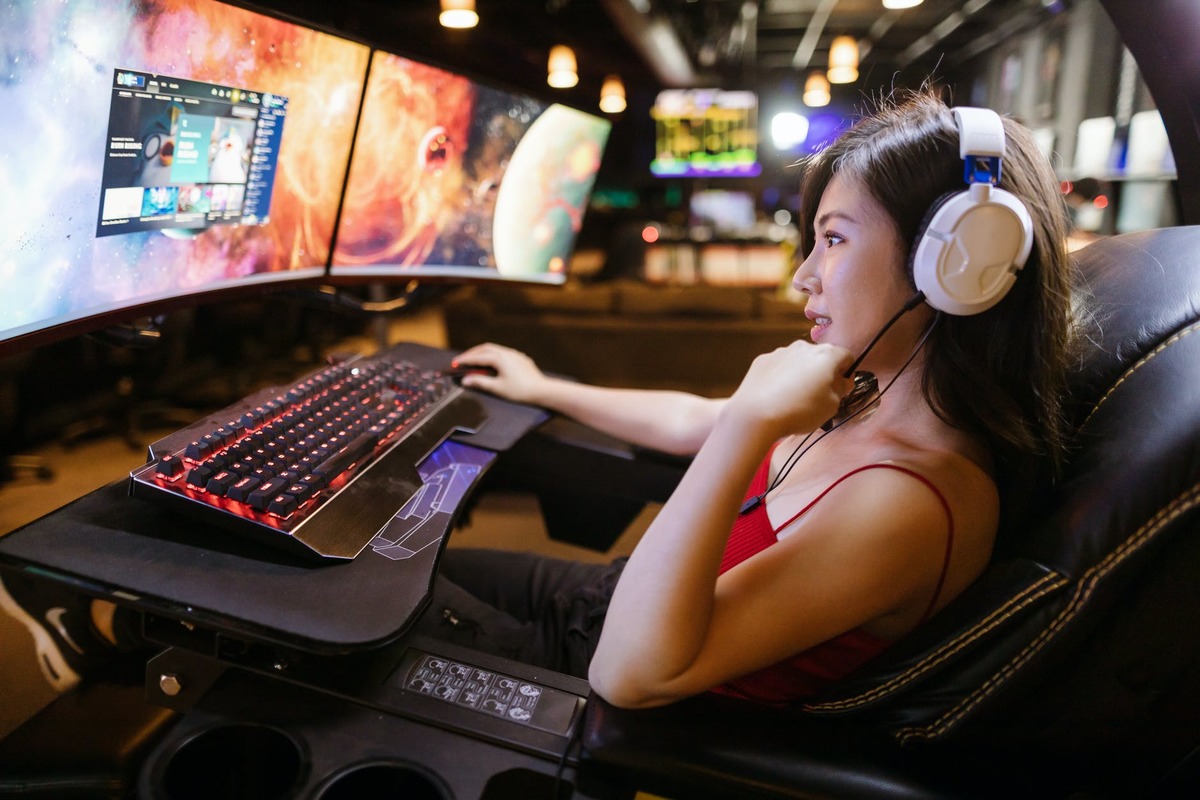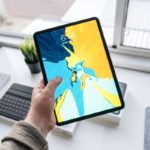The best monitor for your eyes is a very personal choice that must be made with care. Choosing the right model for your needs requires considering the sort of work or chores that will be completed in front of the computer and the amount of light available in the area where they will be residing to choose the most advantageous one.
If your eyes become fatigued from gazing at computers all day, try investing in a curved monitor, which allows you to see the entire screen without straining your eyes.
When purchasing a computer monitor, many individuals do not consider the health of their eyes. However, it should be taken into consideration at all times. Here, we’ll take a look at some of the considerations you should make when selecting a monitor for your home or office.
Which monitor is the most comfortable for your eyes?
A monitor with a big, high-resolution screen and a fast refresh rate is recommended for gaming. However, if you are performing work that needs strong attention or reading all day long without taking pauses in between periods of looking at your computer screens, you may get eye strain.
As a result, look for features such as an FPS counter with other things. LightBoost technology will aid in the alleviation of some of the issues connected with using screens of this caliber!
In addition, you can modify the brightness levels according to the surrounding lighting circumstances, so no matter where someone places their workstation, they should find an appropriate setting for them.
How Should I Select a Monitor that Reduces Eye Strain?
Eyestrain is a frequent problem among office employees worldwide, particularly in the United States. It is possible to put a significant amount of pressure on your eyes by staring at a computer monitor for lengthy periods while working, making them feel dry, weary, and watery.
However, by upgrading your existing computer screen to one of the top eye care and anti-glare monitors for bad vision available on the market, you may alleviate this incredibly irritating condition.
What Is the Cause of Digital Eyestrain?
It is estimated that around 75% of persons who spend seven hours or more sitting in front of a computer or other electronic device suffer from digital eyestrain, often known as computer vision syndrome.
After a time, the eyes might get weary, dry, and even teary due to the lack of oxygen. Digital eyestrain can briefly impair your vision, causing it to become out of focus and difficult to see clearly.
Simple eye exercises performed throughout the day might be beneficial. Roll your eyeballs in different directions and then gaze to the left and right without turning your head to see what happens. Finally, take a few minutes now and then to glance away from your computer screen to give your eyes a rest.
What characteristics should the ideal monitor for eye strain have?
When purchasing a monitor, there are several features to consider to protect your eyesight. It would be best to make certain that the monitor is suitable for your vision needs.
The greater the display’s resolution, the less flickering will occur on it. Flicker is one of the most common causes of eye strain, despite being normally invisible to the naked eye.
- There must be a difference between the refreshed monitor and or equivalent to
- The larger the monitor’s screen, the better the experience. In addition to seeing for longer periods without tiring your eyes, your eyes will move less during the procedure.
- The brightness of the screen may be adjusted. If you are in a well-lit environment, you should maximize brightness. However, if there is insufficient light or you want to view the display in the dark or study all day in front of the desktop, an anti-glare filter is a good investment.
- A graphics card that uses IPS technology provides higher viewing angles, as well as colors that are brighter and more vivid.
- It’s simple to observe on the monitor: the pixel quality and density are clean and smooth, and the pixels are dense.
- Anti-glare displays — The most recent monitors are equipped with anti-glare screens, making it difficult to see. This prevents you from being fatigued, and because it is not glossy, you may work for an extended period without becoming ill.
Which factors should be considered while purchasing the finest monitor for eye strain?
Before purchasing an Eye Care Tech monitor, you should carefully consider the many available features. So that you are clear on everything, I will explain everything in simple terms for you.
Flicker-Free Technology
Some displays use PWM signals. Your eyes may become weary or dizzy as a result. You will not experience this difficulty if you use the Flicker-Free technology.
Type of panel
TN monitors are ideal for gamers since they offer a faster response time and a higher refresh rate than LCD monitors. IPS monitors are recommended for viewing higher-quality images because they provide more vibrant colors and greater viewing angles.
Auto-adjustment of the brightness
If you operate in an environment where the lighting constantly changes, it is preferable to invest in a monitor that adapts the brightness. This will aid in protecting your eyes from the excessive or insufficient light emitted by your computer monitor.
Low-blue-light technology
Monitors are notorious for making your eyes feel fatigued. A monitor with Low Blue Light Technology emits less blue light, which will help your eyes feel better at the end of the day when you use it.
The size of the screen
If you wish to utilize a monitor on your desk, the optimal size is 20 and 22 inches. In addition, they provide adequate space among your eyes and the display without it being too small to provide sufficient surface area for working.
For those who care about video quality, or for those who enjoy watching Netflix before night, 27 to 30 inches displays will provide you with more space to view things clearly while reducing eye strain from trying to squint all day after gazing at such a little gadget!
Which is healthier for your eyes: a tv or a computer monitor?
Using television as a monitor could be exhausting: When looking at the screen, you tend to sit closer to the screen, and because of the increased latency, fuzzier image, and less than optimum color reproduction, utilizing a TV instead of a monitor may be quite tiring on your eyes, especially if you have a lot of work to do.
Bottom Line
If you’re looking for a monitor that can be used for both work and pleasure, I recommend looking into some of the latest gaming monitors, which have features such as minimal blue light and adjustable screen brightness. They can aid in reducing eye tiredness and the ability to remain productive when working long hours at the computer.









